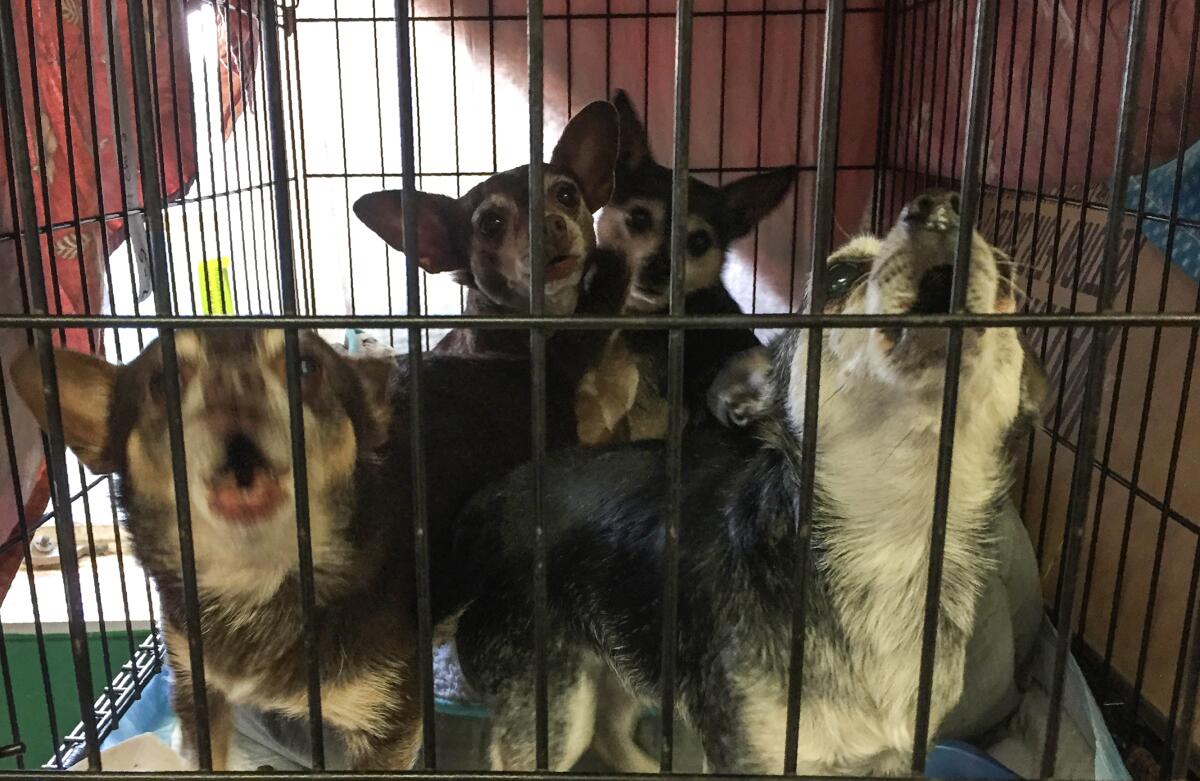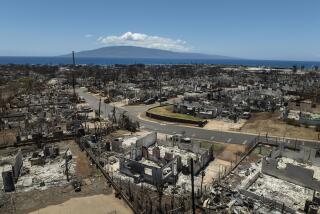Opinion: How to help animals and their people recover from catastrophes like the Maui fire

- Share via
An estimated 3,000 pets were still missing more than a week after deadly wildfires ripped through Maui.
When disasters of this magnitude strike, people often flee with their pets if it’s possible for them to quickly grab their dogs, cats or other kinds of companion animals. However, they may not have time to gather their animals during a quick-onset event like a wildfire, or their animals might be hiding. This is especially true for cats, because they can be skittish.
There are other complications, such as evacuation by boat — which makes it harder to bring animals along. When owners escape without a leash or carrier, their animals might bolt at any stopover or shelter.
Owners can spend weeks, months or even years after fires searching for their missing pets. It can be challenging to identify and match animals with their humans because burn injuries can change the animal’s appearance, they may not have a microchip, or the owners themselves may have died.
Like people, animals that survive fires may experience trauma and stress symptoms, such as regressing on house-training or other issues. Pets may need to be treated for burn injuries or lung damage from inhaling smoke. Some animals don’t survive.
These problems are particularly severe in Maui because islands have limited space for the boarding and care of displaced animals.
People who lose their housing for any reason may need to board their pets. Unfortunately, nearly all of Hawaii’s animal shelters are already at full capacity due to the state’s pet overpopulation, leaving little space available during emergencies.
Because of these challenges, animal-foster networks become key during and after disasters, when some lost pets will need new homes. It’s critical to first make every effort to reunite lost animals with their owners and to hold animals long enough to allow their owners to retrieve their pets. And if lost pets die, every effort needs to be made to inform their owners, for whom these animals are part of their family.
In Hawaii, during the 2018 lava flows, I heard many people call their pets their “keiki” — the Hawaiian word for children. Improving animal welfare ultimately helps people deal with the trauma of disaster because of the intense bond between humans and their animals. The flip side is that people can experience severe psychological distress when their pets are killed, injured or lost. And some refuse to leave during disasters if they can’t bring pets along. That’s why emergency shelters should allow pets if possible. Hotels and other lodging providers should also consider temporarily waiving pet fees and relaxing restrictions on companion animals.
In my research with Ashley Farmer of Illinois State University, we found that sometimes people are forced to surrender their pets after disasters because they can’t find temporary housing that allows dogs or cats, or due to breed restrictions. Some of these surrendered animals will have to be adopted or fostered to ensure that there is enough room in local shelters.
Animal lovers, seeing the catastrophe on Maui, may want to donate food, toys, dog crates and other physical items. But despite good intentions, sending items may not be helpful after disasters. Unless local shelters have robust distribution systems, the logistics of dealing with massive amounts of donated supplies can become overwhelming. Undistributed pet food, for example, can expire before it can be consumed.
The best way to help is to give money to organizations supporting local pets and their owners. Funds donated to groups like the Maui Humane Society can pay for needed goods and services over time, including spay and neuter surgeries and flea treatments.
Offering to adopt a “disaster pet” immediately is also not ideal, even if some animals might be relocated from the island eventually. Sending money increases the chances that the people and animals who are already bonded can stay together. Keep in mind that animal shelters and other organizations will still need help months after the media has moved on.
Losing a beloved cat, dog, rabbit, goat or turtle can be devastating at any time. During a disaster, the loss of a pet amplifies the overall horror of the event. Getting support from animal advocates in finding and reuniting with a missing pet can be a critical step toward recovery.
Sarah DeYoung, an associate professor at the University of Delaware, is the co-author of “All Creatures Safe and Sound: The Social Landscape of Pets in Disasters.” This article was produced in partnership with the Conversation.
More to Read
A cure for the common opinion
Get thought-provoking perspectives with our weekly newsletter.
You may occasionally receive promotional content from the Los Angeles Times.










